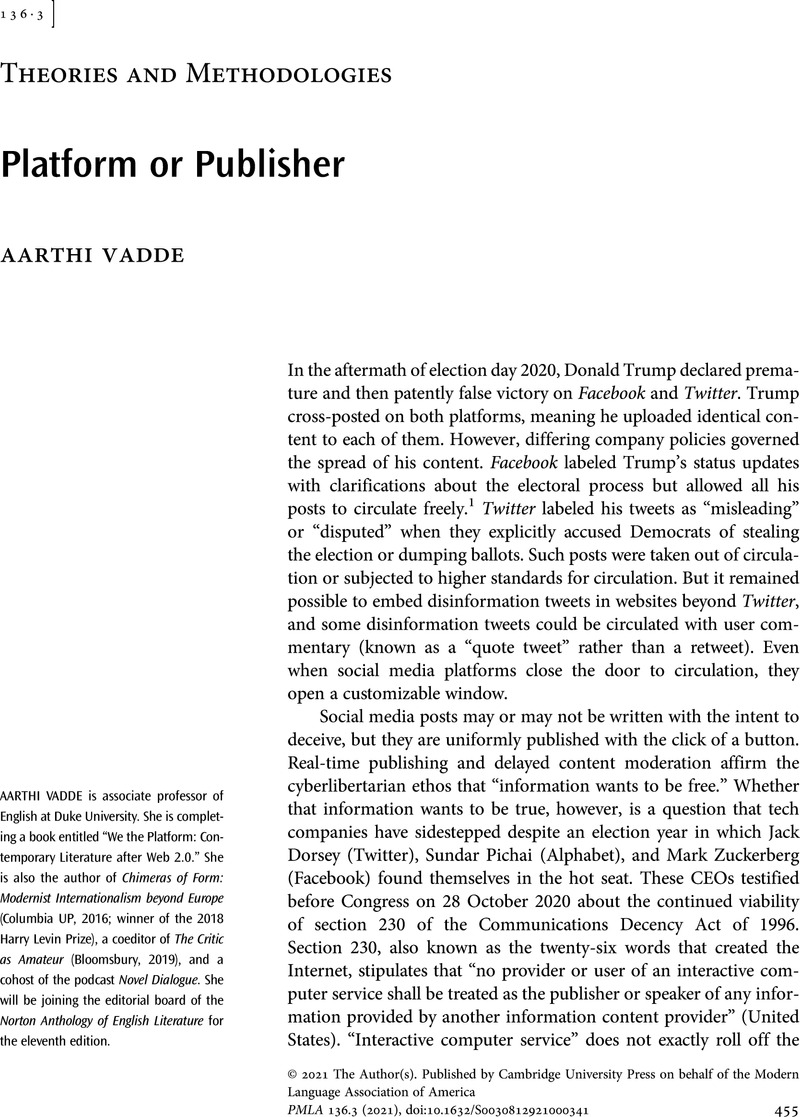Crossref Citations
This article has been cited by the following publications. This list is generated based on data provided by Crossref.
Soelseth, Camilla Holm
2022.
When is a Poet an Instapoet?.
Baltic Screen Media Review,
Vol. 10,
Issue. 1,
p.
96.
Birkinshaw, Julian
2024.
Too Little, Too Late? How Policymakers and Regulators Respond to the Business Model Innovations of Digital Firms.
Academy of Management Perspectives,
Vol. 38,
Issue. 3,
p.
269.
Adeṣọkan, Akin
2025.
Everything is sampled: digital and print mediations in African arts and letters.
Journal of the African Literature Association,
Vol. 19,
Issue. 2,
p.
339.
Ahn, Sunyoung
2025.
Jennifer Egan’s polytechnic style.
Neohelicon,
Hussain, Ijaz
Farooq, Umar
Cheema, Ammara Nawaz
and
Almanjahie, Ibrahim M.
2025.
A Comprehensive Survey on Urdu Hate Speech Detection: Methods, Evaluation, and Challenges.
IEEE Access,
Vol. 13,
Issue. ,
p.
128360.


